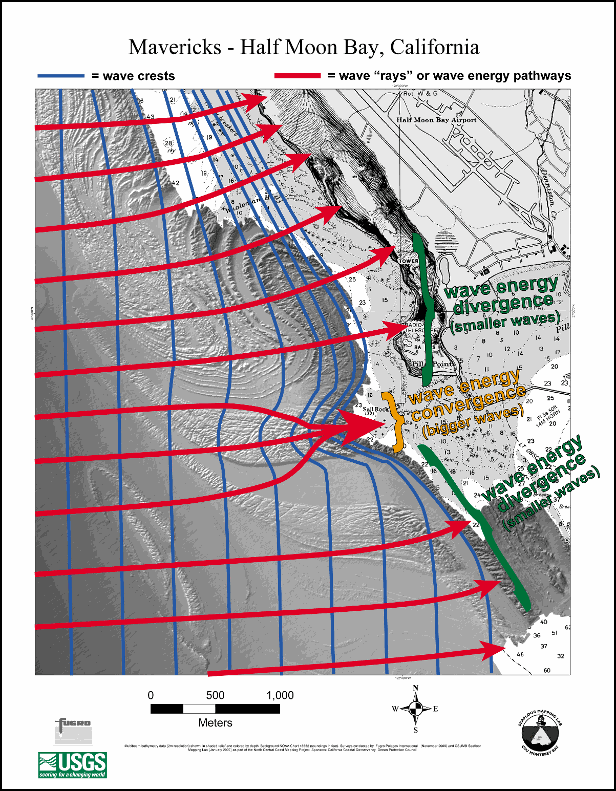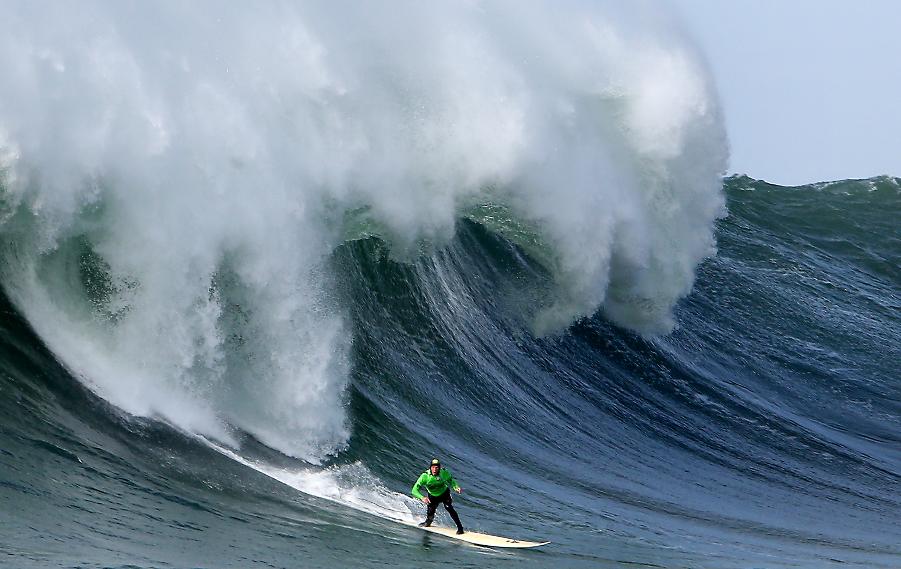
Surfing
Surfer and the Board
As a surfer, one of the most important things is balance. If the force of gravity (downwards force) and the force of buoyancy (upward force) are balanced and in line with each other, the surfer is stable. If the surfer slides backwards on their board, the force of gravity moves behind the force of buoyancy. When opposing forces like gravity and buoyancy become misaligned, the board experiences the twisting force of torque. So when a surfer moves backwards, the torque twists the board so that the nose goes up and the tail goes down. This movement chances the water displacement patterns and the position of the buoyant force. So if a surfer shifts their weight relative to the center of mass of the board, they can tip the nose of the board in all directions.
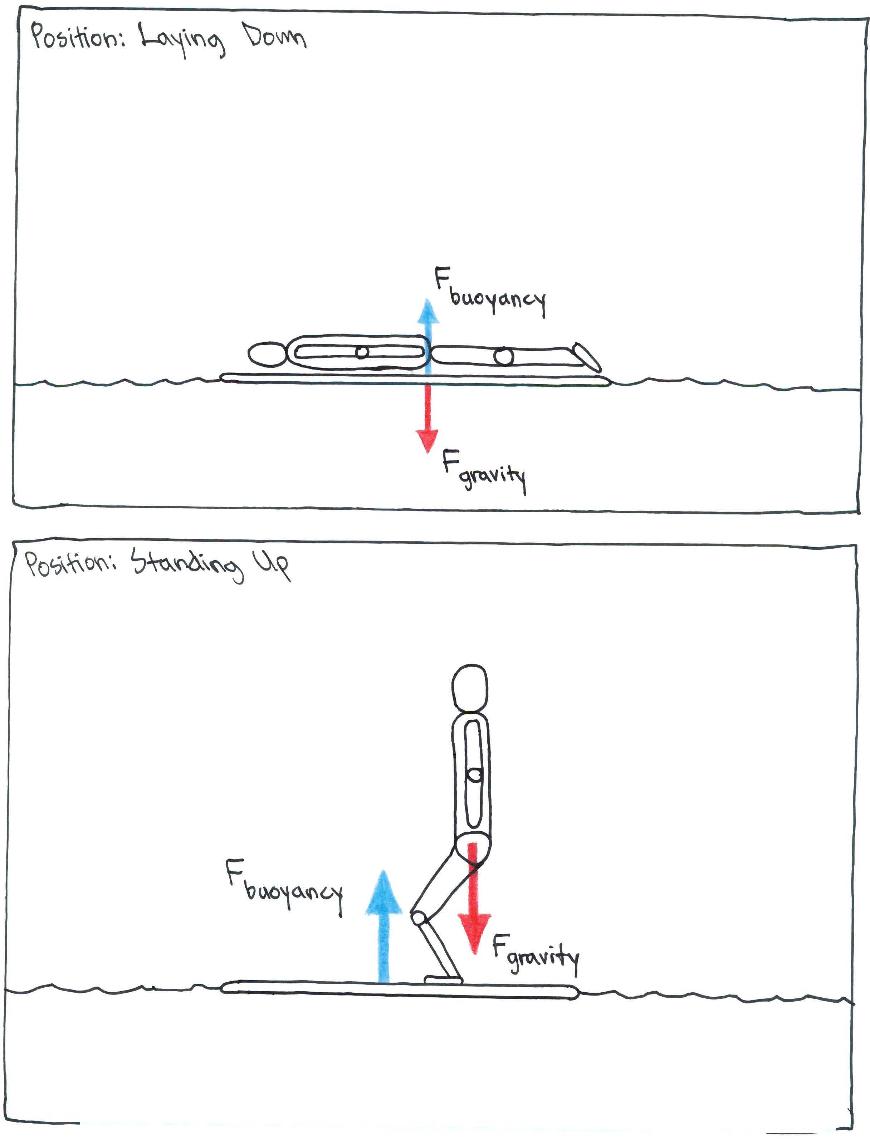
Diagram by Oliver Oglesby
Dropping-In
With large waves such as Mavericks, surfers cannot simply paddle into the wave. Instead, they must be towed in. The reason for the change of technique is connected to basic principles of physics. Mavericks can have a speed of up to 35 miles per hour, and so to catch the wave you must be paddling at a speed to stay slightly ahead of the wave. Since it is impossible to paddle at such great speeds, surfers use the gravitational potential energy (GPE) of the wave. To do this, a surfer paddles to the speed that when the wave passes below, the surfboard starts to fall down the face of the wave. As the surfer drops down the front of the wave, the GPE is converted into kinetic energy (KE) so that the surfer is eventually travelling as fast as the wave, and maybe even faster. An equation to approximate the speed of the surfer at this point is
V = wr where w= the angular velocity of the particles traveling in their orbits and r= the radius of the orbit which is 1/2 the height.
Tube Ride
Tube rides occur when the surfer is fully enclosed in a "tube" of water. To drop into a proper tube ride, the surfer must maneuver steep takeoffs to find the correct line in the tube. If the surfer is riding too low, they lose momentum. The surfer either gets knocked off the board by the lip of the descending wave, or are crunched when the tube closes. If the surfer is riding too high, the water can throw the surfer "over the falls". This is a very unpleaseant experience. If the surfer finds the correct line, and if the air the collapsing tube ejects propels the surfer out of the tube, a successful tube ride has been completed.
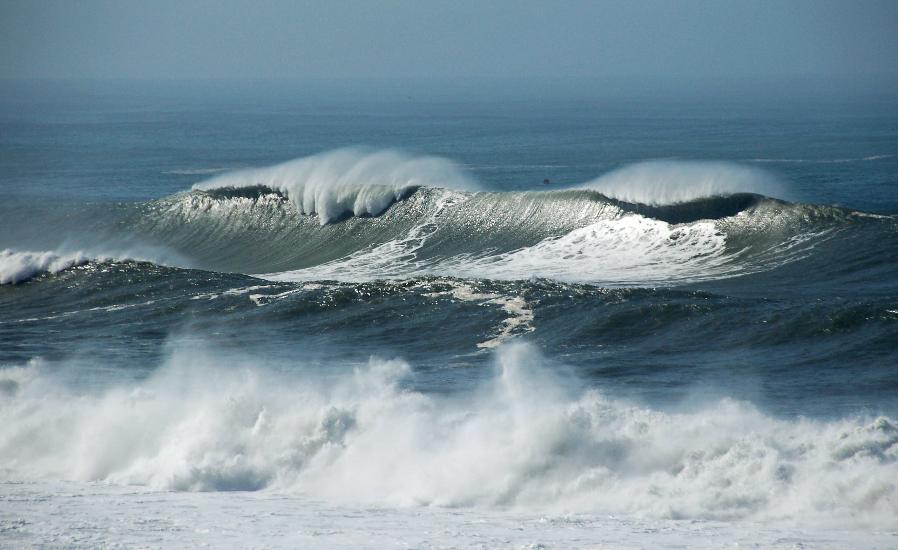
Waves
Ocean waves are often depicted as sine waves. These waves can actually be represented best by the experimental waveshape called trochoid. Trochoids are the curve traced out by a point on a circle as the circle rolls along a line.
The shape of an ocean wave is often depicted as a sine wave, but the the experimental waveshape is described as a "trochoid". A trochoid can be defined as the curve traced out by a point on a circle as the circle is rolled along a line.
The period of a wave refers to the time it takes for the wave (or more specifically a particle on the medium) to make one complete cycle of vibration. All being wave qualities, the frequency, speed, and wavelength all determine the period. The period is the reciprocal of frequency, and the length of a wave and the speed that it is going influences the time quantity of period (time is determined by distance and velocity). A way to think of this in an everyday context is a slinky. When a person makes a transverse (up-and-down) wave with the slinky, the period is the time it take for the slinky to go up, then down, and return to the neutral position. The frequency is the number of periods the slinky has in a certain period of time. The speed would be how quickly the slinky makes the wave rotation. Wavelength would be the length between to up-cycles or two down-cycles of the slinky.
Dispersion means that waves of different wavelenghts travel at different phase speeds (the rate of a particular phase of the wave). This happens to water waves because they are forced by gravity and surface tension, and the calculation also depends on whether the water is shallow or deep. The speed of a water wave is dependent on not only wave length, but gravity and the depth of the water as well. The slinkly here would have different speeds at different points along the period of a wave, marking different phases.
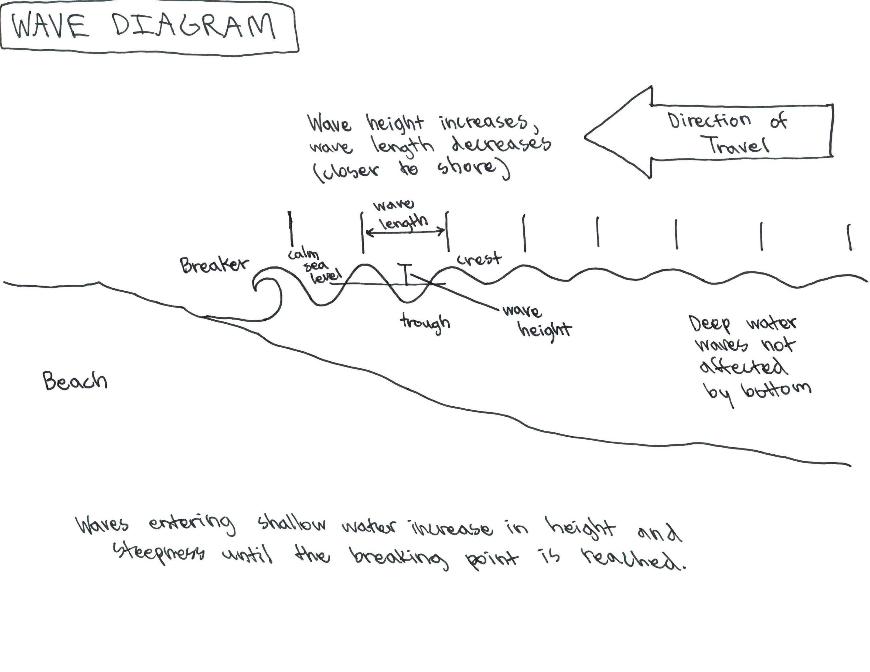
Diagram by Oliver Oglesby
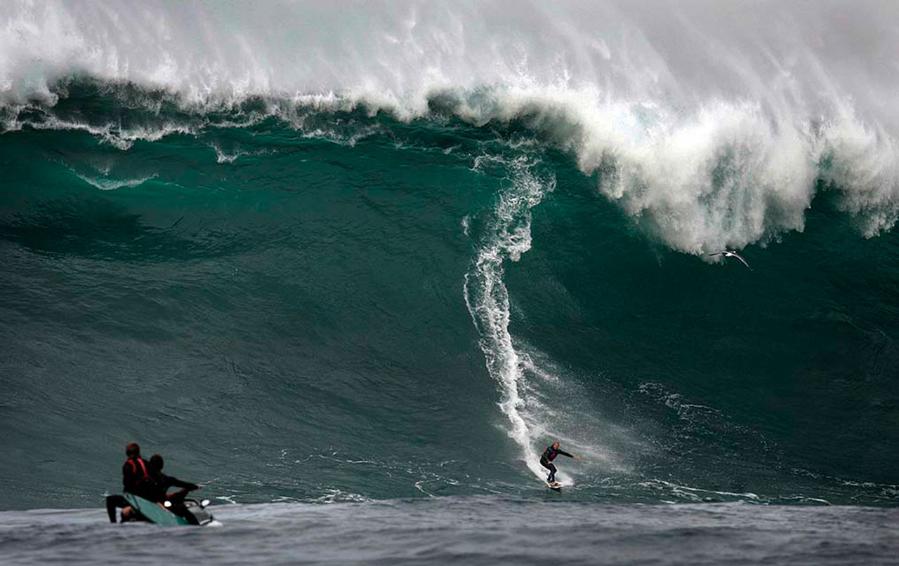
How Mavericks Works
Mavericks is a wave phenomenon that occurs in Janurary in Half Moon Bay, California. Forecasting that monitors the ocean and weather helps to predict when the swell, tide, and wind of Mavericks have perfectly combined. To fully understand why Mavericks occurs, we must look not only above the water, but below.
Topography maps the surface contours of the earth. A similar study is that of bathymetry. Bathymetry is the study of the depth of the ocean floor. Countour maps are created to illustrate the ocean bottom's terrain. Bathymetry studies of Mavericks have revealed an underwater ramp that had deep troughs along the side borders. This surface countour creates angles, speeds, and bending waves that result in the unique phenomenon of Mavericks.
Wave season at Mavericks often runs from October to March. The waves begin to break when they reach a height of 10 feet, but don't take their true form until they reach 15 feet. Roughly every year, the waves reach a height of 35 or 40 feet and break over a different and less predictable group of reefs, which are father from the shore. For the most part, Mavericks is a right-breaking wave. Left breaks are ridden when the surf is less than 20 feet high. The reef is terraced, producing a two-speed wave. There is a hollow, fast opening section which constitutes the most of the Mavericks ride. There is then a shoulder which often leads to the Second Bowl, a near-vertical section. There is another flat portion, which occasionally ends with a third steep section. The majority of Mavericks rides last 15 seconds or less, but the correct combination of these sections could lead to a 50 second ride spanning 400 yards. Lower tides make Mavericks waves more dangerous, as they become steeper. Northwest swells result in easier, longer waves. Western swells create steeper and shorter waves.
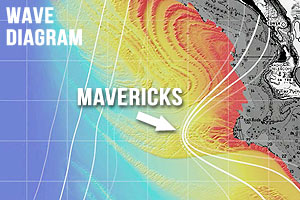 | 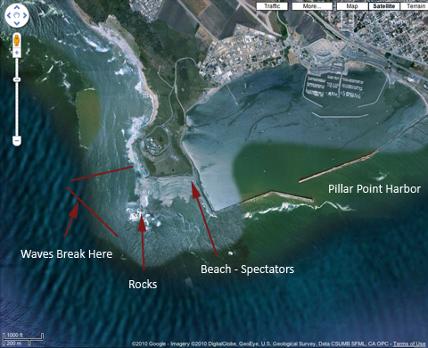 |
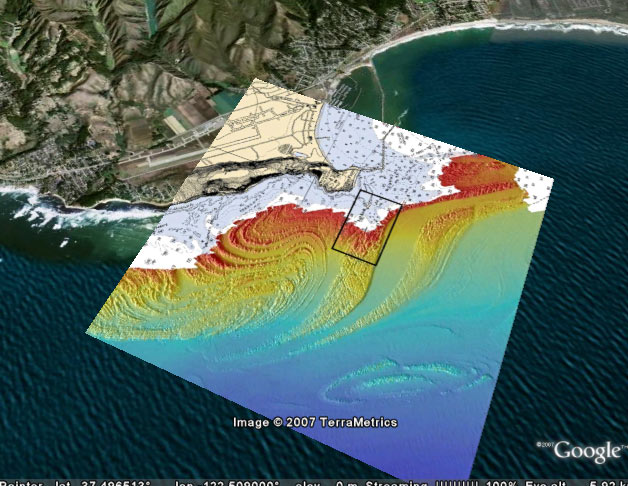 | 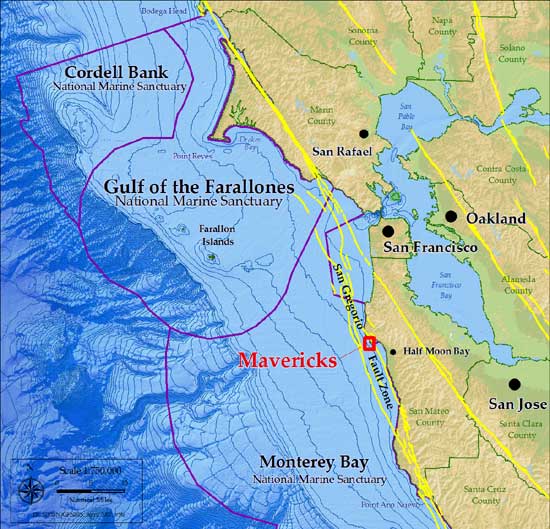 |
